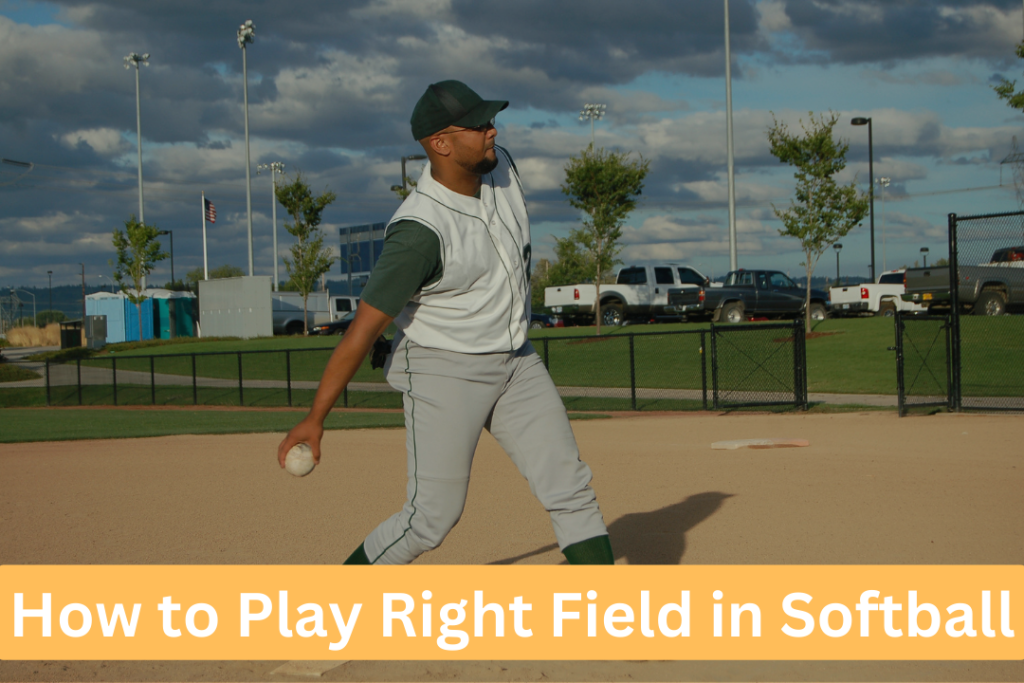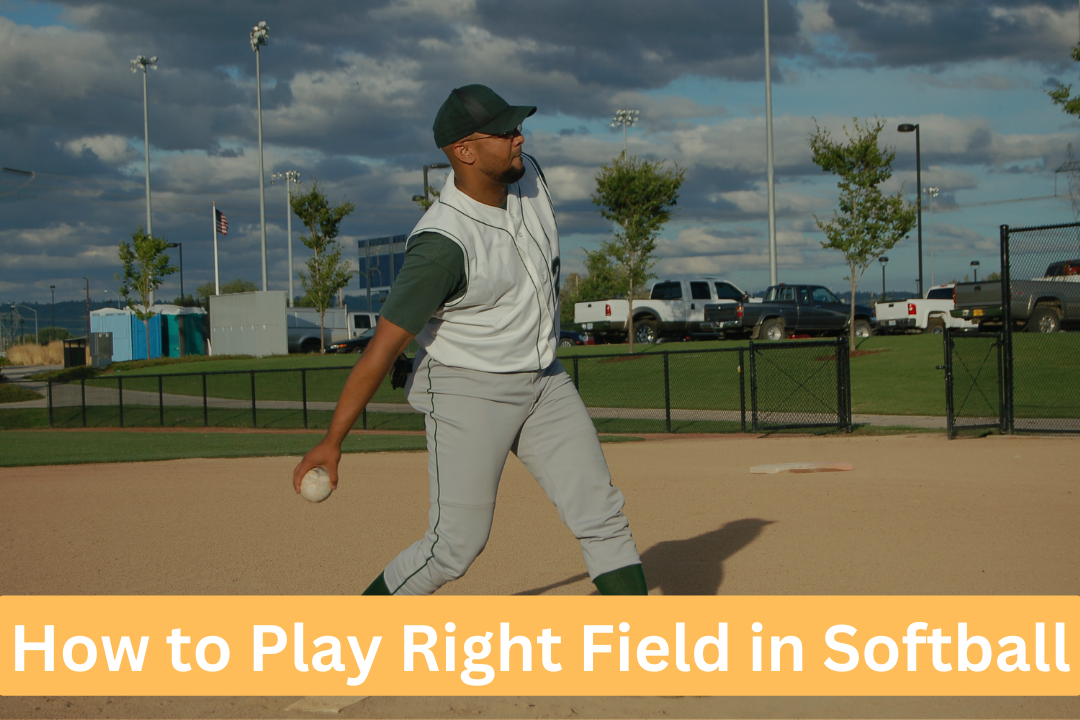
So you’ve got the incredibly awful right field. I know it’s not a very simple position in the world but no need to worry, let’s make the most of it by being the greatest player you can be and learning how to play right field in softball appropriately. Playing the Softball right field can be difficult because it requires a lot of sprinting, rapid decision-making, and precise throwing. It is critical to cultivate the right mindset to perform this position effectively. This includes mentally preparing for the game, staying concentrated on the job at hand, and remaining positive throughout the game.
The right fielder should be positioned in the outfield on the right side, between the center fielder and the foul line. They will be able to cover the region between first and second base as well as any missiles hit down the softball right field line as a result of this. Communication with the other outfielders and infielders is essential for preventing accidents and ensuring that everyone on the field understands their responsibilities. Right fielders must be mindful of the game scenario and predict where the ball will be hit. This entails giving close attention to the batter, hurler, and game circumstance.
Five Best Tips to Play Right Field in Softball
As you can see, playing right field in softball is a lot more tricky than most people think. Over the last few years, the function has evolved to demand more athletic ability and comprehensive adaptability. Right field is important because the player must not only secure their position on the field but also completely back up to first base. Right fielders should keep their feet moving and be prepared to shift in any situation. For throwing to other fielders or to the bases, the right fielder should have a powerful and precise arm.
Handling the right field can be difficult because the right fielder may not have as many chances to make plays as other fielders. Even when the ball isn’t going their way, it’s critical to remain psychologically tough and focused. Finally, practicing in the proper softball right field is the greatest method to progress. This includes practicing abilities such as catching, tossing, and footwork, as well as becoming familiar with game scenarios through practice games and scrimmages. So, without further ado, let’s dig deeper and learn how to play right field in softball.
1- Understanding the proper positioning of right field in softball
Before we learn how to play the right field, let’s go over what this position involves. There are three outfield spots in softball: left field, center field, and right field. The outfield spot on the right side of the field, opposite the plate, is known as the right field. The right fielder’s main duty is to capture fly balls hit to the right side of the field and to keep runners from advancing from second to third base.
The secret to successfully playing the right field in softball is to position yourself appropriately. This entails standing in the proper location on the field to capture fly projectiles aimed at you. To do so, position yourself slightly to the right of the second base, facing the plate. You should also take a few steps back from the infield to give yourself enough room to sprint and collect fly balls.
2- Acting as a Backup
They must cover first base if the first baseman goes after a ball. They would also assist second basemen – but usually, not second base, as that is usually done by the center fielder. Along with aiding the infield, right fielders also facilitate center fielders and serve as a backup if the center fielder has difficulty fielding a ball.
Right fielders in softball have a significant role to play, particularly if they want to help their teammates succeed. As striking to the opposing field is a desirable technique in a batter, right-handed players who acquire this skill will hit to the right field in softball rather than left field. Furthermore, Left-handed hitters, like right-handed batters, typically strike to the right side of the area. As a result, right fielders must constantly monitor all hitters.
3- Catching Fly Balls and Throwing Accurately
The capacity to catch fly balls is one of the most essential abilities a right fielder must have. When a fly ball is thrown your way, you must sprint toward it and capture it before it strikes the ground. To accomplish this, you must maintain your gaze fixed on the ball, sprint towards it, and angle yourself properly to make the catch.
Another essential talent for a right fielder is the ability to throw correctly. You may need to toss the ball to another person on the field after catching a fly ball, such as the hurler or third baseman. For doing this you need to be strong enough to throw properly toward the right spot on the field.
4- Communicating with Your Teammates
Softball is a team activity in which communication is essential for success on the pitch. You must interact with your colleagues, including the pitcher, catcher, and other outfielders, as a right fielder in softball. This includes sharing your location on the field, calling out when you’re going to capture a fly ball, and communicating any other pertinent information during the game. Right fielders must also be able to interact with other players, particularly the second baseman and center fielder.
Because second basemen typically move backward to capture a ball in shallow right field in softball, the right fielder has a superior field of vision. As a result, the right fielder must understand when it is ideal to remove the second baseman and complete the play. The same is true for projectiles positioned in the right-center space. Along with being able to designate a player out, the right fielder must also be able to hear other players doing the same thing.
5- Bouncing and Diving
Most right fielders need to enhance their ability to leave their feet. Jumping to grab a ball is challenging due to timing. For the same reason, diving for capture is tough. Right fielders must also learn to handle the barrier. All of these abilities distinguish the best from the remainder of the competition. Right fielders in softball cannot learn the ability by diving once. It requires time and effort to perfect the dive without getting hurt. Because right fielders typically sprint before jumping, the action must be spontaneous. Furthermore, diving for a ball can cause issues for the defense if the outfielder does not make the play, particularly if no one is supporting the right fielder. Although practicing on a mat is advantageous, diving moves should only be tried if there are no other options.
Is The Right Field A Tricky Position To Play?
The right field in softball is a popular position in the game. Excellent right fielders are constantly moving around and closely monitoring the ball. They are aware of where the right side of the infield is playing and pay close consideration to the batter’s lateralization.
To make matters worse, many fields are built with the right field facing the sun. As a result, right fielders must struggle with the light in their eyes at certain periods of the day. In many instances, the best player is placed in the right field for this rationale alone.
Concluding Remarks on Playing Right Field In Softball
The right field in softball necessitates a mix of physical and analytical abilities. You must be quick and agile, have a powerful arm, good hand-eye synchronization, and have outstanding communication skills with your peers for how to play right field. Furthermore, you must maintain mental focus and always be conscious of the game scenario. To successfully play the right field, you must position yourself properly based on the hitter’s tendencies and the game circumstances. You should also be ready to make a play at any time, whether it’s collecting a fly ball, retrieving a ground ball, or throwing to a cutoff player.

